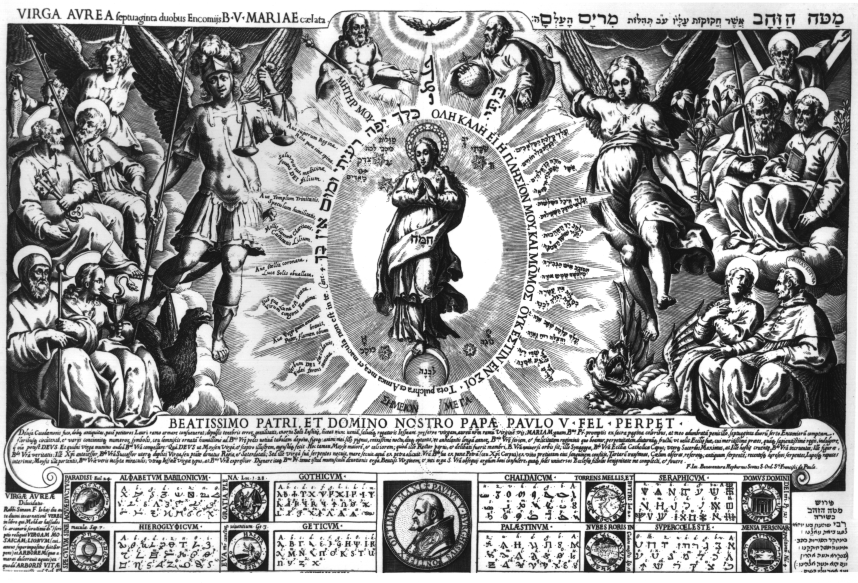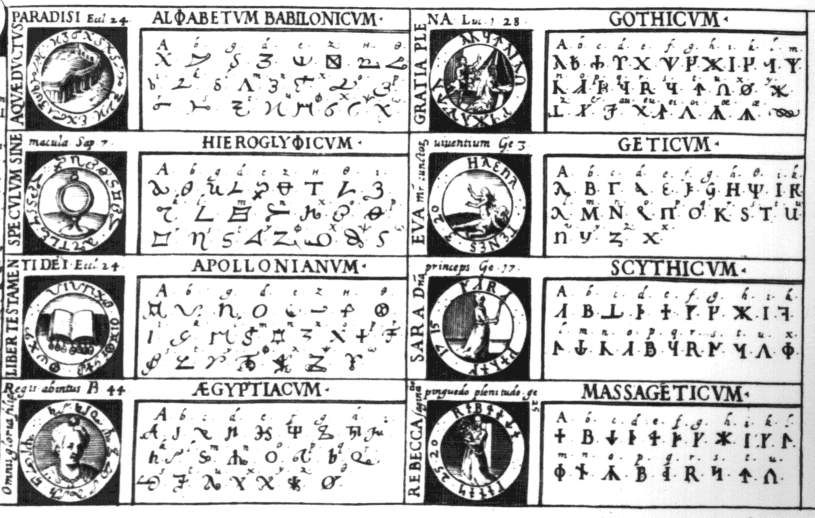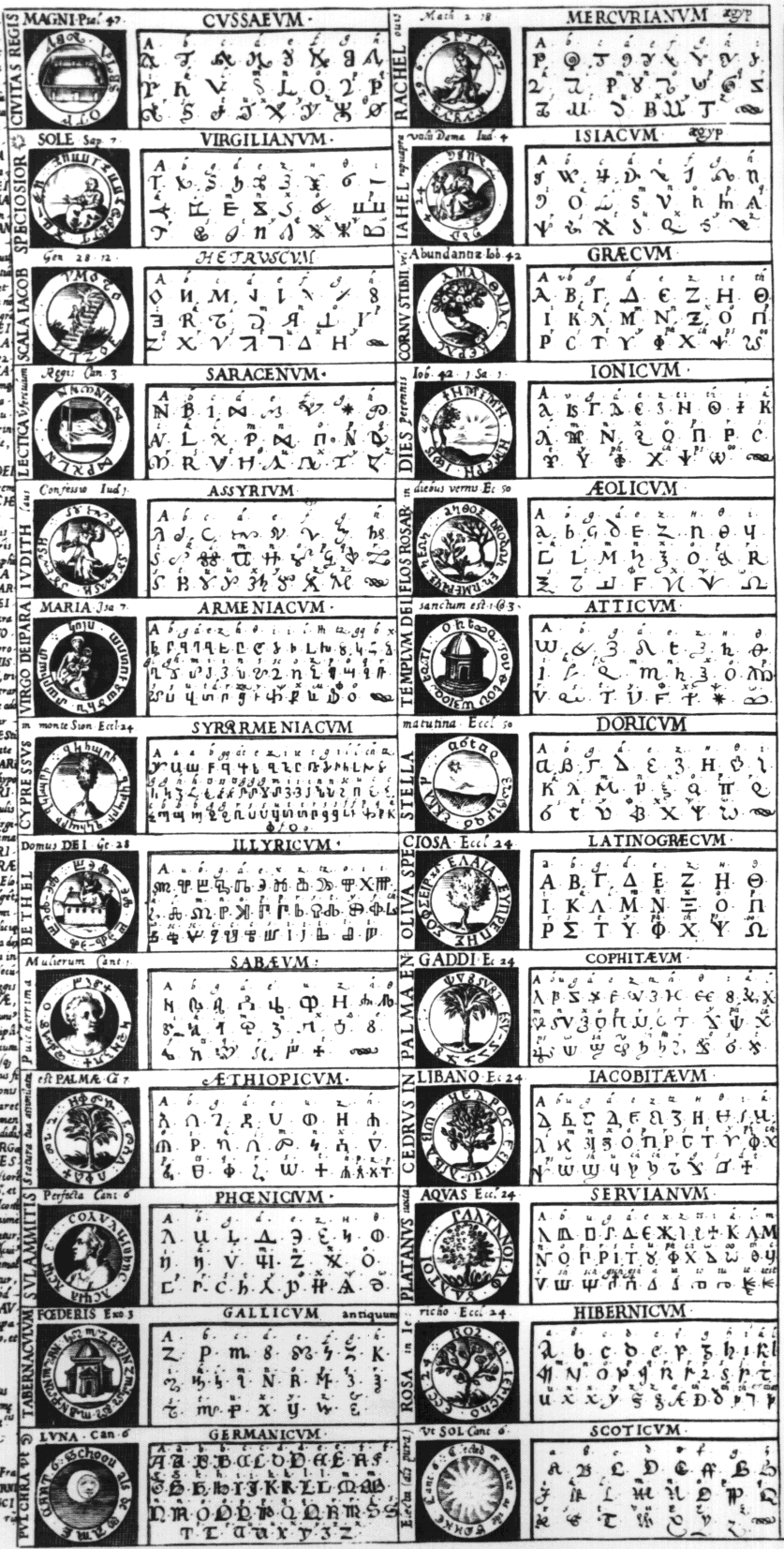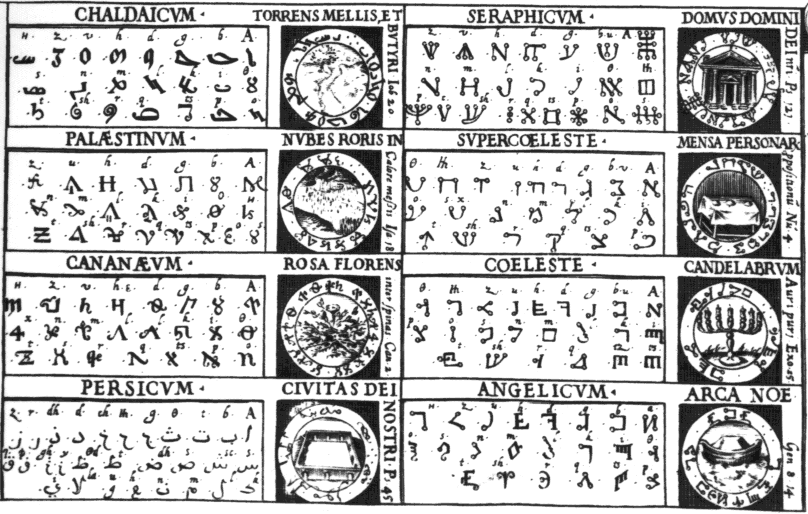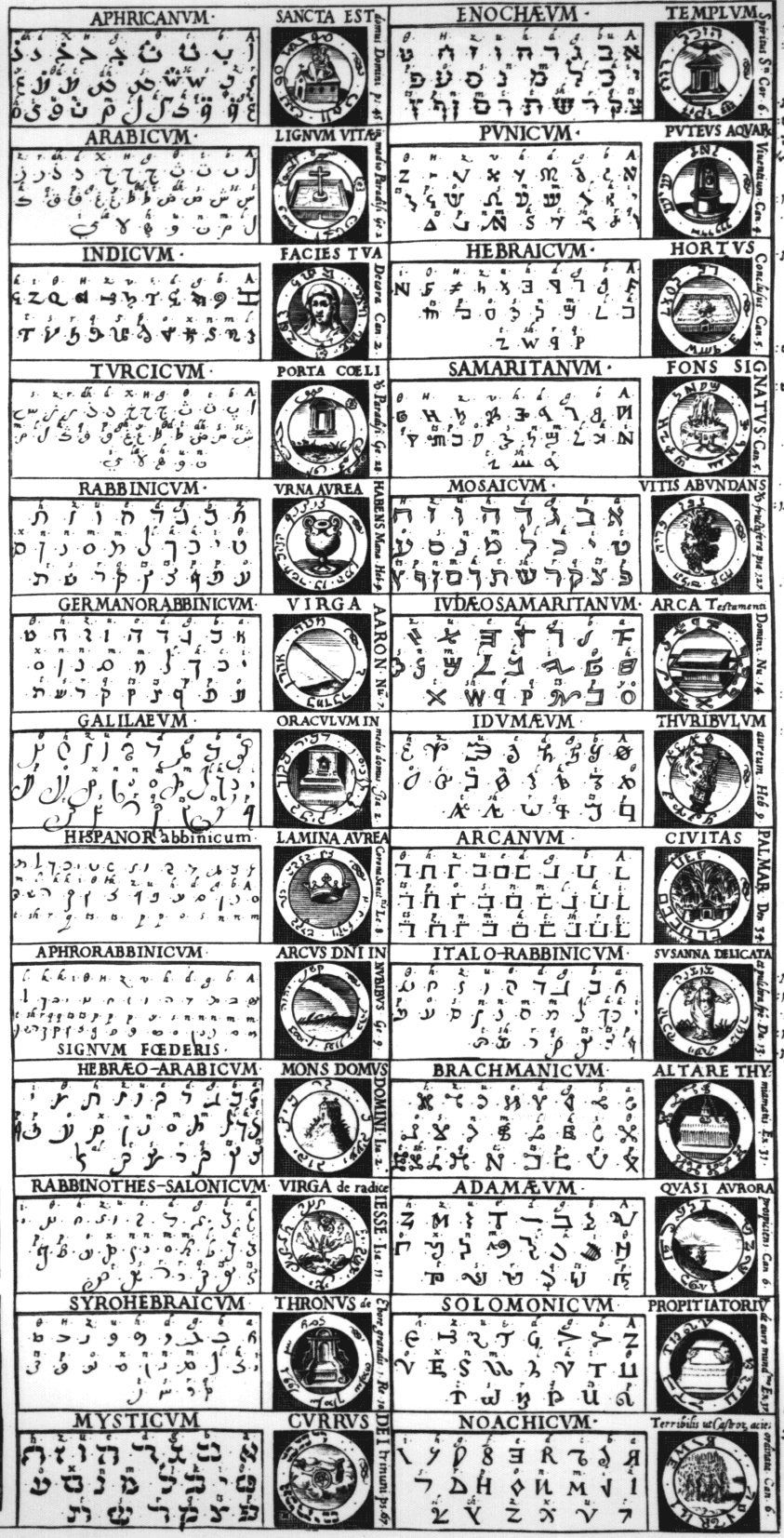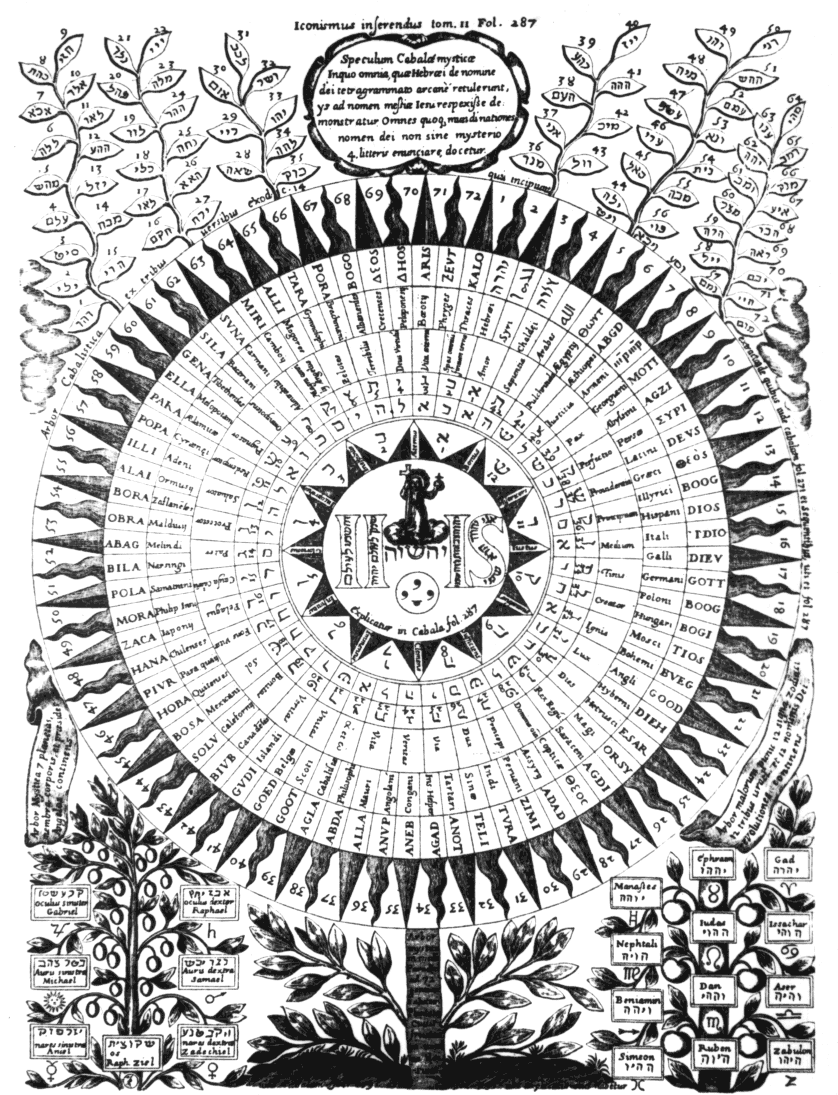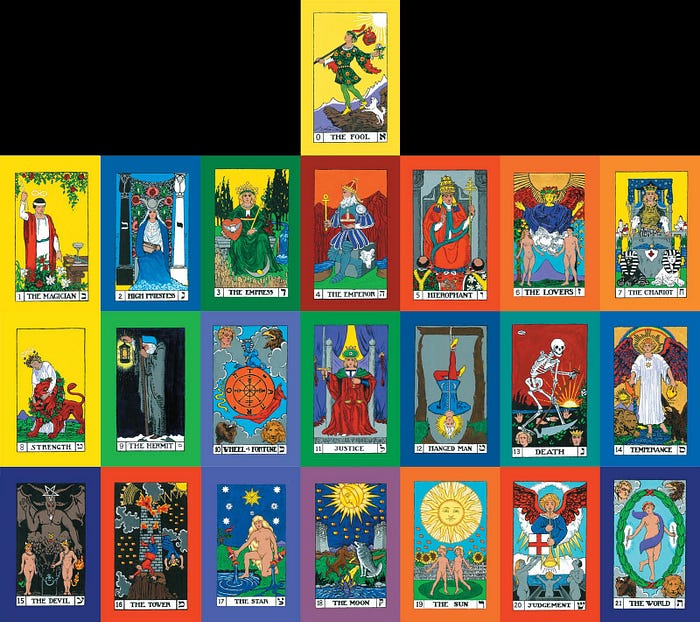In alchemy, the double-headed eagle symbolizes the reconciliation of spirit and matter. The eagle itself represents purified sulfur and an ascending spirit, while the double heads represent the reconciliation of these two principles.
This symbol relates to the alchemical regeneration and transmutation of the “soul personality” in the individual: a spiritual alchemical awakening process that can only be integrated by upright living. The double-headed eagle is also known as the “phoenix, the bird of resurrection”.
SOURCE: newjerseygrandlodge.org
ALCHEMICAL SYMBOLISM of the DOUBLE-HEADED EAGLE
SOLVE et COAGULA:
ALCHEMICAL SYMBOLISM
of the
DOUBLE-HEADED EAGLE
Gregory H. Peters 32˚ K\S\A\
24 August 2008
PREFACE
One of the most prevalent emblems of the Scottish Rite is that of the Double-Headed Eagle. Mentioned briefly in comparison to the white-lambskin apron of the Craft Lodge, the symbol of the double-headed eagle is perhaps one of the most ancient emblems in Scottish Rite, having been represented for thousands of years in many of the worlds cultures.
What is the significance of this symbol such that it has found its way into the mythology and symbolism of so many cultures over time? As a symbol, the image embodies many layers of meaning, each of which are significant. The eagle itself has always represented such ideas as nobility and just rulership. The large wings are protective, while the razor sharp talons inflict punishment to evil. The noble white head indicates just and aristocratic ruler. Strength, courage, foresight and immorality have all been associated with this image.
What, however, of the double headed eagle? Something in this image speaks to humanity at a primal, archetypal level. As a symbol, it is capable of transcending language, race, history, time itself – and presenting to the mind a presence of transformation and the eternal truth of man’s real nature.
In order to understand this symbol we will necessarily have to venture into the recesses of the secret chambers of our hearts, the true sanctum sanctorum or secret shrine of the Divine. At the portico to the temple of Apollo at Delphi were said to be inscribed in gold letters the words GNOTHI SEUTON meaning “Know Thyself.” The symbol of the double-headed eagle will be found to harkens back to this simple instruction of the Greek sage Pythagoras; an instruction which is the gateway to Light and Truth, and the perfected nature of man when elevated to the highest.
HISTORICAL SIGHTINGS
In the Louvre are two large terra cotta cylinders dating from approximately 3000 BC covered completely in cuneiform characters. Recovered from the remains of the Babylonian city of Lagash they record the foundation of the city by Gudea. The cylinders recite the story of the King, how the county was in drought with the “waters of the Tigris fell low” and the people feared that the gods were displeased. King Gudea had a dream in which a divine man came to him; a man whose stature was immense, with his feet firmly on the earth and his head reaching to the heavens, and upon his head was the corona of a god surmounted by the Storm Bird that extended it wings across all of Lagash.
The Divine Man of Gudea’s dream is the Babylonian god Ningersu, a solar deity. Associated with Ningersu is an eagle called Imgig, usually depicted lion-headed. There are a few extant examples of Imgig depicted as a double headed eagle. The oldest known example is a clay cylinder from a priest of the Sun god Ningersu which depicts a Priestess presenting a nude neophyte before an altar to the goddess Bau. Raised behind the goddess is an inscription supported by the heads of the double headed eagle. To date, this is the oldest known representation of the double-headed eagle.
In ancient Mesopotamia among the ruins of the Hittites, dating from around the sixth millennium B.C. are several instances. The Hittite empire went through three general phases, at its greatest point stretching from Mesopotamia to all of Palestine and Syria. A conquering empire, they had successfully taken over Sumerian remnants of Babylonian civilization, and in doing so had adopted many of the cultural, political and religions ideas of the conquered peoples. The Hittite capital of Bogazkoy was a primary center of commerce and culture in Western Asia. The civilization fell first to the invasions in 1200B.C. of the Tracians, Phrygians and Assyrians, and after a brief resurgence from 1050 – 700 B.C., they were finally conquered by the Assyrians.
Excavations at the former capital have unearthed cylindrical clay seals with a double-headed eagle with outspread wings upon it which appear to have been used as a type of currency. Similar images have been found in AlacaHuyuk and Yzailikaya, dating from 1400 and 1250 B.C. which are more religious in nature, the image being surrounded in one instance by deities and in another as the guardian of the gate to the capital city.
Similarly, in the city of Cappadocia there are several ruins which contain the image of the double-headed eagle, almost invariably at the entrance to gates, surrounding a sanctuary, or at the doorway to a palace. The Greek name for the city was Pteris, meaning “wing.” It has been suggested that this was the literal translation of the cities name, which was a county filled with icons of double-headed eagles with wings outstretched.
In the ruins of the city of Boghaz Keui is the temple of Iasily Kaya with a sculpture depicting a royal and divine procession. J. Garstang describes an ancient “house or temple of the Eagle in The Land of the Hittites:
The significance of the double headed eagle is unknown. But that there was a local worship associated with the eagle is indicated by the discovery at Boghaz Keui of a sculptured head of this bird in black stone, larger than natural size.
He further describes the translation of a cuneiform fragment from the same site which describes “the house or temple of the eagle.”
Before Moses received his revelation, the ancient Chaldeans worshipped many gods including a Sun god similar to Ningersu, atop Mount Sinai. Alluded to in the 29th psalm as a Lord of thunder and lightning, powerful and majestic, whose voice shakes the deserts of Kadesh, the god was no doubt inherited from the Hittites and their storm god represented by a double headed eagle.
Long before the unification of the two kingdoms of Egypt by King Narmer, before the Pyramids of the Giza plateau had even been dreamt of let alone built, the pre-dynastic culture of the Nile were worshippers of a earth mother type of goddess. While little is known of this period, it is remarkable that stone representations of a two-headed bird were frequent, with many tombs having been discovered containing these relics which were built thousands of years before our common era.
The last dynasty to rule the Byzantine Empire was led by Palaiologos. Rising to power after the close of the Fourth Crusade, in 1261AD he recaptured Constantinople, attempting to unite the Eastern Orthodox Church with the Roman Catholic Church, and adopting the double-headed eagle as his emblem. After the fall of Byzantium the double-headed eagle found its way into the imperial ensigns of many eastern European nations.
The symbol was also used as the coat of arms for many of the primary crusaders in their journeys to protect the Holy Land, most likely having been acquired in their journeys in the eastern Turkish empires.
Within our Rite, the symbol was inherited from the Order of the Royal Secret as the ensign of their highest degree the Knight Kadosh or Knight of the White and Black Eagle. The Order of the Royal Secret was considered thene plus ultra of Masonry at the time. Established in 1761 by Etienne (Stephen) Morin, who received a patent from the French Masonic authority known as the Council of the Emperors of the East and West to establish the Order. The emblem of the Council was the double-headed eagle. We see echoes of this inheritance in our rituals of the 17th degree, Knight of the East and West, and in our 30th degree of Knight Kadosh.
Many authorities feel that the pre-cursor body, the Council of the Emperors of the East and West, were given explicit permission to use the emblem from King Frederick of Prussia. As such it represented the effort of unification of the fractured Holy Roman Empire.
These are just a few references to the historical usage of this icon. The emblem of the double-headed eagle has made a significant appearance throughout time and across cultures, awakening within man a remembrance of his nobility, aristocracy and remembrance of his divine nature. From ancient Egypt and Babylon to the Roman Empire, Knights Templar and the Greek Orthodox Church, the double headed eagle has played a significant role.
ALCHEMICAL EMBLEM
What is significant about this symbol that it should be so deeply embedded in the consciousness of the worlds cultures? We find some indication by looking to the Scottish Rite itself, and in particular the writings of Albert Pike.
Pike’s monumental work in organizing and enriching the Scottish rite is undeniable. He held that the Scottish Rite was the supreme sanctuary of Masonry, containing a synthesis of all the wisdom of the ancients, and a complete system of initiation for spiritual enlightenment. Encoded within the degrees of the order are doctrines of the western mysteries from the kabala, hermeticism, philosophical schools and Rosicrucian traditions.
Much of the work of revising the rite from the old French rituals was a result of Pikes learning in these areas of study, and his work on the ritual committee to revise the rituals was, in his own words, motivated by a desire to spiritualize the work.
In a letter to the Masonic historian Robert Gould from 1888, Pike writes that he has spent considerable time collecting the old Hermetic and alchemical works in order to ascertain their relationship to Masonic symbols. He writes:
“I cannot conceive of anything that could have induced Ashmole, Mainwaring, and other men of their class to unite themselves with a lodge of working Masons, except this – that as the Alchemists, Hermeticists, andRosicrucians had no association of [their] own in England or Scotland, they joined the Masonic lodges in order to meet one another without being suspected, and I am convinced that it was the men who inherited their doctrine who brought their symbols into Masonry, but kept the Hermetic meanings to themselves. To these men we owe, I believe, the Master’s degree. The substitute word means “the Creative Energy from the Father” – the Demiourgos and Hiram, I think, was made the hero, because his name resembled Hermes, “The Master of the Lodge”; the Divine Word (the Egyptian Thoth), the Mercury of the Alchemists.”
Albert Pike believed that the emblem of the double-headed eagle ultimately derived from alchemy. As a science and art, alchemy was practiced throughout the ancient world. The name most likely derives from the Greekkhemeia, the “transmutation of metals.” According to many hermetic traditions, this ultimately derived from the Arabic al-khimiya, which was thought to be a reference to the art of the Egyptians, khem meaning the “black land” which referred to the rich alluvial soil of the Nile.
The alchemists thrived in the middle ages predominantly in Europe and Arabia. The most acclaimed goals were the transmutation of base metals into gold, the creation of the elixir of life which would prevent and cure all diseases and prolong life indefinitely, and the discovery of a universal solvent.
Alchemical literature is a rich treasure trove of puzzling metaphors, symbolic stories and dream like sequences presented as instruction for those with “eyes to see.” At the center of alchemical research was the quest for thePhilosopher’s Stone, a fantastic material which was thought to be both physical and spiritual, an instrument by which all of the alchemical transformations were empowered. The Stone has many titles and attributes. It was called the lapsit exilis (“stone fallen from heaven”). In some texts it was said to be composed all of fire; in others, of a special water of the stars that does not wet. It was said to be composed of a common matter that was often overlooked or outright rejected, thought useless by the ignorant and discarded.
Alchemical work was called the spagyric art, and was under the aegis of Hermes Trismegistus or Thrice Greatest. This celebrated figure was an amalgamation of the Greek Hermes and the Egyptian God Thoth, both considered Lords of Writing and Magick.
Attributed to thrice-greatest Hermes are a series of writings known as the Corpus Hermeticum, which formed the foundation of Alchemical and Rosicrucian texts. The texts are structured as several dialogues between Hermes and his disciple, covering a wide range of philosophical and spiritual subjects. The text contains traces of Gnostic and Egyptian thought, with the ultimate subject being the regeneration and spiritual illumination of man.
Thrice Greatest Hermes was also known as Poemandres, the Sheppard of Men. In one of the most famous passages from the Corpus Hermeticum, Poemandres explains the constitution and spiritual regeneration of humanity:
- So he who hath the whole authority o’er [all] the mortals in the cosmos and o’er its lives irrational, bent his face downwards through the Harmony, breaking right through its strength, and showed to downward Nature God’s fair form.
And when she saw that Form of beauty which can never satiate, and him who [now] possessed within himself each single energy of [all seven] Rulers as well as God’s own Form, she smiled with love; for ’twas as though she’d seen the image of Man’s fairest form upon her Water, his shadow on her Earth.
He in turn beholding the form like to himself, existing in her, in her Water, loved it and willed to live in it; and with the will came act, and [so] he vivified the form devoid of reason.
And Nature took the object of her love and wound herself completely around him, and they were intermingled, for they were lovers.
- And this is why beyond all creatures on the earth man is twofold; mortal because of body, but because of the essential man immortal.
The Hermetica also includes the celebrated Hymnodia Krypte, the “Secret Sermon on the Mount,” which stirs the mind towards its true Divine nature:
Ye powers that are within me, hymn the One and All; sing with my Will, Powers all that are within me! O blessed Gnosis, by thee illumined, hymning through thee the Light that mind alone can see, I joy in Joy of Mind. Sing with me praises, all ye Powers! Sing praise, my Self-control; sing thou through me, my Righteousness, the praises of the Righteous; sing thou, my Sharing-all, the praises of the All; through me sing, Truth, Truth’spraises! Sing thou, O Good, the Good! O Life and Light, from us to you our praises flow! Father, I give Thee thanks, to Thee Thou Energy of all my Powers; I give Thee thanks, O God, Thou Power of all my Energies!
Thy Logos sings through me Thy praises. Take back through me the All into Thy Reason – my reasonable oblation! Thus cry the Powers in me. They sing Thy praise, Thou All; they do Thy Will. From Thee Thy Will; to Thee the All. Receive from all their reasonable oblation. The All that is in us, O Life, preserve; O Light illumine it; O God in-spirit it. It it Thy Mind that plays the Shepherd to Thy Word, O Thou Creator, Bestower of the Spirit.
Thou art God; Thy Man thus cries to Thee through Fire, through Air, through Earth, through Water, through Spirit, through Thy creatures. ’Tis from Thy Aeon I have found Praise-giving; and in Thy Will, the object of my search, have I found rest.
In addition to the Corpus Hermeticum, the Tabula Smaragdina or Emerald Tablet of Hermes is the veritable cornerstone the Hermetic tradition. With possible roots in Arabic alchemical writings, the Emerald Tablet outlines the entire doctrine of the Alchemical work in a few short lines which purported to describe the work of the Philosophers Stone, also known as the Operation of the Sun. Found among the alchemical notes of Isaac Newton is a translation of the tablet:
- Tis true without lying, certain & most true.
- That which is below is like that which is above & that which is above is like that which is below to do the miracles of one only thing.
- And as all things have been & arose from one by the meditation of one: so all things have their birth from this one thing by adaptation.
- The Sun is its father, the moon its mother,
- The wind hath carried it in its belly, the earth its nurse.
- The father of all perfection in the whole world is here.
- Its force or power is entire if it be converted into earth.
7a. Separate thou the earth from the fire, the subtle from the gross sweetly with great industry.
- It ascends from the earth to the heaven & again it descends to the earth and receives the force of things superior & inferior.
- By this means you shall have the glory of the whole world & thereby all obscurity shall fly from you.
- Its force is above all force, for it vanquishes every subtle thing & penetrates every solid thing.
11a. So was the world created.
- From this are & do come admirable adaptations where of the means (or process) is here in this.
- Hence I am called Hermes Trismegist, having the three parts of the philosophy of the whole world.
- That which I have said of the operation of the Sun is accomplished & ended.
Alchemists and Hermeticists of the middle ages wrote countless studies of the Philosophers Stone and its attributes. In the Golden Tract by an anonymous German philosopher, the Stone is described as
one, [and] the medicine one, which, however according to the philosophers, is called Rebis (Two-thing), being composed of two things, namely, a body and a spirit (red or white)…Rebis is two things, and these two things are one thing […]which is called Elixir[…] the nature of sulphur and mercury above ground, while underground they become gold and silver.
Furthermore, he writes “Know that the secret of the work consists in male and female, i.e. an active and a passive principle. “
The dual natured rebis was usually depicted as a two headed royal figure, and also often as a double headed eagle.
A somewhat more suggestive description of the Philosophers Stone was given in the tract La Lumiere sortant des Tenebres (The Light Coming forth from the Darkness):
The philosophers have given sulfur, or fire, the name gold not for nothing, because it is truly gold both in essence and in substance, but much more perfect than common gold. It is a gold that is completely sulfur, or rather a true sulfur of gold, a gold that is entirely fire, or the true fire of gold that develops; in philosophical caves and mines; a gold that cannot be changed or surpassed by any element, because it is itself the master of elements; a very fixed gold in which is only fixity; a very pure gold, because it is purity itself; a very powerful gold because without it everything else pines away; a balsamy gold, because it preserves all bodies against decomposition; an animal gold because it is the soul of elements of the entire lower nature; a vegetable gold, because it is the principle of the entire vegetation; a mineral gold, because it is sulfury, quicksilvery, and salty; an ethereal gold, because it is of heavenly nature and it is a true earthly heaven that is veiled by another heaven; finally it is a solar gold, because it is the rightful son of the Sun and the true Sun of Nature; its power gives force to the elements of which the warmth vivifies the souls and of which the movement of the entire Nature is brought into movement; from its influence the power of things arises, because it is the influence of the light, a part of the heavens, the lower Sun and the Light of Nature, without which even science would be blind; without its warmth reason would be stupid; without its rays imagination would be dead; without its influences spirit is sterile; and without its light intellect renaming in eternal darkness.
The alchemists held that the Philosophers Stone was created by unification of two opposites to create a third, perfected thing. The Operation of the Sun and Moon, sometimes described as the work of Gold and Silver, or Fire and Water, Male and Female, and so on. In this was God and Man mingled, and the powers of creation would open up to the perfected adept who had cultivated the philosophical stone. By the application of an intense heat, or fire, the separated elements would be combined into philosophical gold.
The sage Paracelsus wrote:
First, and chiefly, the principal subject of this Art is fire, which always exists in one and the same property and mode of operation, nor can it receive its life from anything else. It possess […] a state and power common to all fires which lie hid in secret, of vivifying. The fire in the furnace may be compared to the sun. It heats the furnace and the vessels, just as the sun heats the vast universe. For as nothing can be produced in the world without the sun, so also in this Art nothing can be produced without this simple fire. No operation can be completed without it. It is the Great Arcanum of Art, embracing all things which are comprised therein […]. It abides by itself, and needs nothing; but all others which stand in need of this can get fruition of it and have life from it. Know, then, that the ultimate and also the primal matter of everything is fire. This is, as it were, the key that unlocks the chest. It is this which makes manifest whatever is hidden in anything.
By the element of fire all that is imperfect is destroyed and taken away, as for instance, the five metals, Mercury, Jupiter, Mars, Venus and Saturn. On the other hand, the perfect metals, Sol and Luna, are not consumed in that same fire […]. Fire separates that which is constant or fixed from that which is fugitive or volatile. Fire is the father or active principle of separation.[…] Fire contains within itself the whole of Alchemy […].
Gold, Fire, the Sun, and Silver, Water and the Moon find correspondence in the Eastern philosophies of the subtle energetic nerves which when activated stimulate the kundalini or fire serpent at the base of the spine which is said to be a sleeping goddess which, when awakened rises up the spine bringing with its ascent the spiritual illumination and ecstasy of the adept. When the alchemical philosophers spoke of sulphur, mercury, salt, gold, silver, and so on, they were not referring to the base physical elements and metals as we usually understand them. Rather, the alchemical elements referred to subtle energies within the alchemist himself. The seven classical planets may be seen as a reference to the “interior stars” of chakras of the Hindu alchemical and tantric teachings. Aspects of consciousness which might be dissolved through analysis and deep insight, purified and consecrated, and then reconstituted by unification that results in the perfected man.
Anonymously published in 1670, the Invocation of the Flame from the comte de Gabalis is a beautiful, stirring invocation of the divine Light achived through the perfection of the Stone:
I call upon Thee, O Living God, radiant with illuminating fire. O Unseen parent of the Sun! Pour forth Thy light givin power and energise Thy divine spark. Enter into this flame and let it be agitated by the breaths of Thy holy spirit. Manifest Thy power and open for me the Temple of Almighty God which is within this fire! Maniest Thy Light for my regeneration and let the breath, height, fullness and crown of the solar radiance appear and may the God within shine forth!
From the Chaldean Oracles, cited often throughout alchemical literature, we read:
There is above the Celestial Lights an Incorruptible Flame always sparkling; the spring of lie, the formation of all beings, the original of all things. This Flame produceth all things, and nothing perisheth but what it consumeth. It maketh itself known by itself. This Fire cannot be contained in any place; it is without body and without matter. It encompasseth the heavens.
The heart should not fear to approach this adorable Fire, or to be touched by it; it will never be consume by this sweet Fire, whose mild and tranquil heat maketh the binding, the harmony, and the duration of the world. Nothing subisteth but by this Fire, which is God Himself. All is full of God, and God is in all.
Pike cited several of these works as evidence for the true meaning and significance of the double-headed eagle, which he equated with the alchemical Stone of the Philosophers.
THE REBIS AS CORNERSTONE
In Lambsprinks’s Tractatus de Lapide Philosophico there is an image of an alchemist in the garb of an Imperial messenger. Upon his chest is a double-headed eagle of white and black, showing the union of opposites in one being and the noble ascent to the heavens in the guise of the proud bird of eternity.
Pike similarly noted a significant diagram from Basil Valentine’s Azoth, which depicts a double-headed eagle in a shield, again symbolic of the combination of opposites. Around the circumference of the diagram is the sentence Visita Interiora Terra Rectificanto Inveniens Occultum Lapidem, meaning “Visit the Interior of the Earth; by rectification thou shalt find the Hidden Stone.” This formula was often referred to as V.I.T.R.I.O.L. in the alchemical texts.
The Arcanum Hermeticae Philosophiae of Jean d’Espagnet reads:
It is even so in the Philosopher’s Work; for the matter of the Stone possesseth his interior fire, which is partly innate, partly also is added by the Philosopher’s Art, for those are united and come inward together […] the internal standeth in need of the external, which the Philosopher administereth according to the precepts of Art and Nature […] Because the whole Work consisteth in separation and perfect preparation of the four elements, therefore so many grades of fire are necessary thereunto; for every element is extracted by the degree of fire proper to it.
Published anonymously in Altona in 1785, Gehime Figuren der Rosenkreuzer (Secret Symbols of the Rosicrucians) contains alchemical and hermetic diagrams with many instances of the double-headed eagle. This book was purported to be a work of 16th and 17th century Rosicrucian adepts. Pike found much of the material in the book significant, and in particular one of the diagrams to be of a highly suggestive nature regarding the Double-headed Eagle and its association with the Stone of the Philosophers.
The diagram shows the alchemical-hermetic Rosy Cross, which was considered to be the key of all esoteric knowledge. The Adepts of the Rosy Cross were said to wear this device in pure gold upon their breasts. The ribbon of the cross is surmounted by two double-headed eagles, one white and one gold. The dual mouths of the white eagle hold the moon, and the gold eagle hold the sun. Upon their breasts are the alchemical symbols for mercury, sulphur and salt, considered to be the three foundational building elements for spiritual regeneration.
Sulphur represented the caustic agent, which was used to burn away the dross of the first matter and purify it. It was akin to self-consciousness, and the ability of the rational mind to analyse itself. Salt was the preservative principle, representing the dormant and unenlightened state, as well as the vast storehouse of material in the subconscious. Mercury represented the illuminated, enlightened or super-consciousness.
Between the two eagles is the hermetic hexagram, again with the glyphs of mercury, sulphur and salt and the signs of the seven classical planets. The hexagram is held aloft by two angels, and in the center is an image of Christ bestowing blessings. The diagram shows the red and white tinctures, symbolized by the red and white double-headed eagles, and indicates that by unification of these opposites in the heart and mind of man, true illumination and spiritual grace may be achieved.
The double-headed eagle as an alchemical symbol illustrates the hermetic and alchemical axiom SOLVE et COAGULA, the process of separating the elements and then bringing them together after purification and consecration. This process is somewhat analogous to the psychological practice of depth analysis, where the personality is analyzed in detail, subconscious elements are brought to light and processed, and the personality is then made whole or fully integrated so that all the aspects of consciousness are in harmony – the divided self is healed and the person becomes whole.
Alipili’s The Center of Nature Concentrated alludes to this Great Work of regeneration:
He that hath knowledge of the Microcosm, cannot long be ignorant of the knowledge of the Macrocosm. This is that which the Egyptian industrious searchers of Nature so often said, and loudly proclaimed – that every one should KNOW HIMSELF. This speech their dull disciplis took in a moral sense, and in ignorance affixed it to their Temples. But I admonish thee, whosoever thou art, that desirest to dive into the inmost parts of Nature, if that which thou seekest thou findest not within thee, thou wilt never find it without thee. If thou knowest not the excellency of thine own house, why dost thou seek and search after the excellency of other things? The universal Orb of the world contains not so great mysteries and excellences as a little Man, formed by God to his won Image. And he who desires the primacy amongst the students of Nature, will nowhere find a greater or better field of study than himself. Therefore will I follow the examples of the Egyptians, and from my whole heart, and certain true experience proved by me, speak to my neighbor in the words of the Egyptians, and with a loud voice do now proclaim: O MAN, KNOW THYSELF, in Thee is hid the Treasure of Treasures.
Michael Maier also discusses:
Almost everybody who has heard of the philosopher’s stone and its power, asks where it can be found. The philosopher always answers twofold. First, they say that Adam has taken the philosopher’s stone with him from Paradise, and that it is now present within you, within me, and within everybody, and that the birds of far countries has taken it with them. Second, the philosophers answer that it can be found in the earth, in the mountains, in the air and in the river. Now what way should one seek? To me, both ways; but each way has its own way.
The Philosophical Stone may also be alluded to in the Bible. Revelations 2:17 reads:
He that hath an ear, let him hear what the Spirit saith unto the churches; To him that overcometh will I give to eat of the hidden manna, and will give a white stone, and in the stone a new name written, which no man knoweth saving he that receiveth it.
Could this in fact be referring to the spiritual perfection of man in the philosophical gold of the lapsit exilis – the Stone fallen from Heaven?
Furthermore, a passage from Psalm 118:22 is highly suggestive:
The stone which the builders refused is become the head stone of the corner.
In Hebrew the phrase “the Stone which the builders refused” is Ehben masu ha-bonaim Using a method of letter substitution from the Hebrew Kabbalah, the phrase has the numerical value of 273. In the literal kabbalah, words with the same numerical value are thought to be related in significant ways. Other Hebrew words with the identical value of 273 are Aur Ganuz, meaning “Hidden Light,” and Hiram Abif.
Might the cornerstone of the Holy Royal Arch, and the hero of the Third Degree of our Blude Lodges be referring to this Stone of the Philosophers, the Hidden Light of the sages by which spiritual regeneration is to be accomplished? As if for further proof, the substitute for the Ancient Master’s word is encoded into the very Hebrew phrase itself: MAsu HA BoNaim.
CONCLUSIONS
Throughtout the history of mankind, symbols have been used to represent universal truths. The most powerful of these find expression across cultures, in recurring motifs that seem to have their origin in the Platonic First Forms or Jungian archetypes of the race consciousness; a common origin and heritage which goes far in proving the ultimate universal brotherhood of humanity.
“The aim of the alchemists,” wrote Joseph Campbell,
“was to achieve not a terminal perfection but a process ever continuing, of which their ‘stone’, the lapis philosophorum, should become at once the model and the catalyst: a process whereby and wherein all pairs of opposites – eternity and time, heaven and hell, male and female, youth and age – should be brought together by something ‘midway between perfected and unperfected bodies.’
The double headed-eagle, as the ensign of the Alchemical Rebus or Stone of the Philosophers, symbolizes this process, the magnum opus or Great Work of spiritual regeneration. Through its unification of opposites and association with alchemical Fire, the path of regeneration and ascent up the Tree of Life is indicated.
As Scottish Rite masons, may we each undertake the task of so analyzing and purifying our natures, that we too may be as proud, noble, august and bold as the Eagle which is our symbol, showing our minds the direct path ofthe ascent into the Heavens, carrying our souls aloft to the very throne of All Creation.
SELECT BIBLIOGRAPHY
King James Bible
Anonymous. Secret Symbols of the Rosicrucians of the 16th and 17th Centuries. Reprinted by AMORC, 1987.
Atwood, Mary Anne. A Suggestive Inquiry into the Hermetic Mystery. Yogi Publication Society, 1918.
Campbell, Joseph. The Mythic Image. Princeton Universiry Press, 1974.
Case, Paul Foster. Private publications from the School of Ageless Wisdom.
De Hoyos, Arturo. The Scottish Rite Ritual Monitor & Guide. Supreme Council 33˚
Garstang, John. The Land of the Hittites. E.P. Dutton, 1910.
Mathers, S.L. MacGregor. The Kabbalah Unveiled. Weiser, 1989.
Parker, Arthur C. The Double-Headed Eagle and Whence It Came. Published in The Builder, 1923.
Pike, Albert. Magnus Opus or the Great Work. Kessinger Publishing reprint.
Pike, Albert. Morals & Dogma. Supreme Council 33˚ Southern Jurisdiction, 1950.
Pike, Albert. Symbolism of the Blue Degrees of Freemasonry (Albert Pike’s Esoterika). Transcribed & Edited by Arturo de Hoyos. Scottish Rite Research Society, 2005.
Roob, Alexander. Alchemy & Mysticism: The Hermetic Museum. Taschen, 1996.
Scott, Walter (ed.). Hermetica. Shambala, 1985.
Waite, Arthur Edward. The Hermetic Museum. Weiser, 1990.
Westcott, William Wynn. Collectanea Hermetica. Weiser, 1998.

